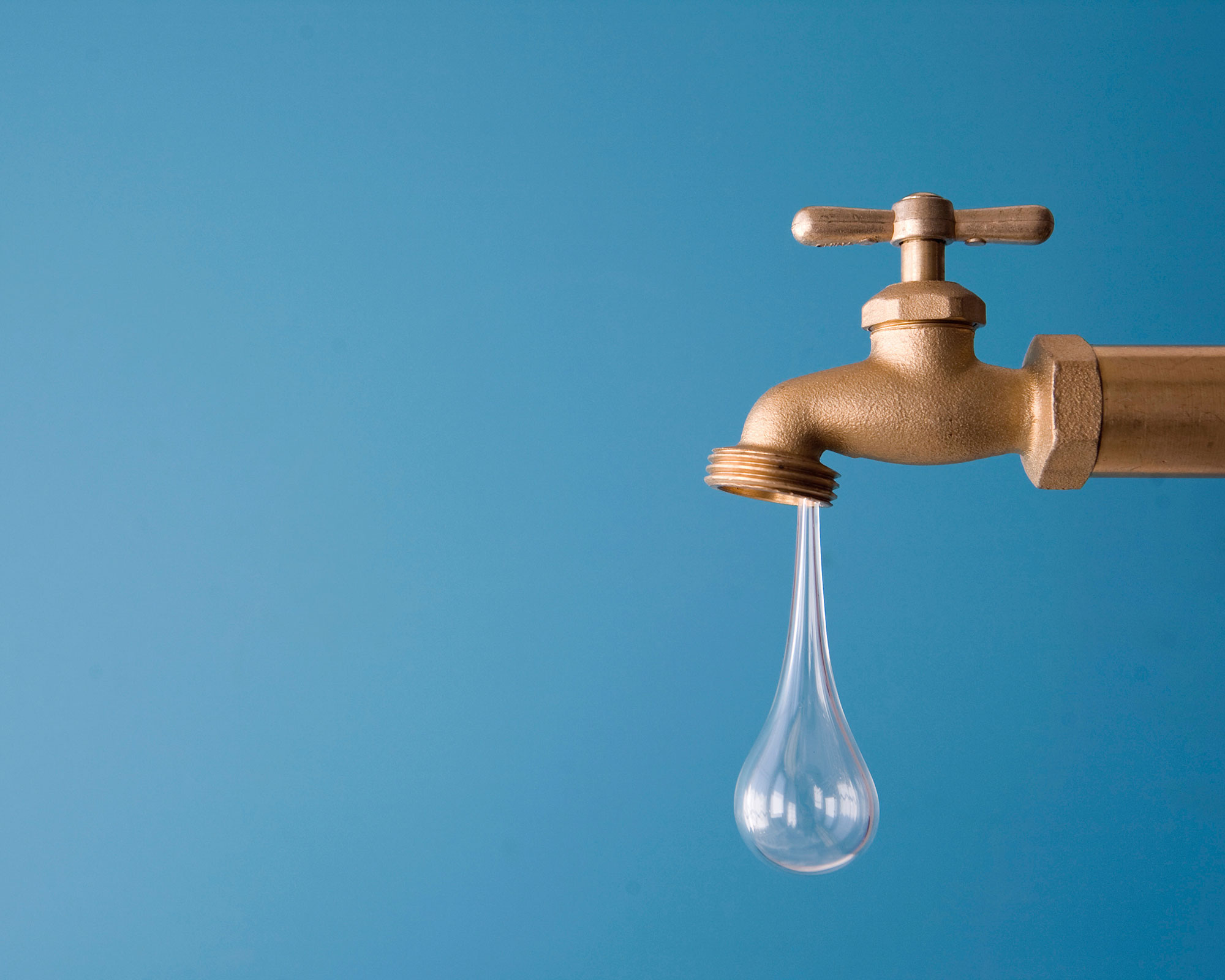How to fix a leaky faucet – from bathtubs to kitchen mixers
Don’t let a leaky faucet waste water in your home, here’s how to fix it


Knowing exactly how to fix a leaky faucet is a DIY must. According to the United States Environmental Protection Agency (USEPA), the average household’s leaks can account for nearly 10,000 gallons of water wasted every year and ten per cent of homes have leaks that waste 90 gallons or more per day.
‘Common types of leaks found in the home are worn toilet flappers, dripping faucets and other leaking valves. These types of leaks are often easy to fix, requiring only a few tools and hardware that can pay for themselves in water savings,' they say. 'Fixing easily corrected household water leaks can save homeowners about 10 per cent on their water bills.’
Knowing how to fix a leaky faucet is up there with knowing how to replace a faucet washer and how to unclog a toilet; it is vital to learn these tried-and-tested techniques – just in case.
‘Yours may start to leak, either from the nozzle or at the base of the fixture, so it’s important to know how to fix a leaky faucet. As soon as you notice that a faucet is dripping, try to make the repair immediately. Stopping the dripping as soon as you can saves money and resources,' say the experts at the USEPA. 'After all, the Drip Calculator from the US Geological Survey reminds us that one drip every minute wastes 34 gallons per year.’
How to fix a leaky faucet
Whether it’s a bath or basin faucet in the bathroom or a kitchen sink faucet, here’s how to fix it with expert advice from John Lawless at Big Bathroom Shop.
1. Identify the problem
You can usually identify if your dripping faucet uses rubber washers or ceramic discs by simply turning the faucet handle. If the faucet uses ceramic discs, then the handle will only rotate a quarter or half a turn. If the handle rotates more than this, your faucet uses a rubber washer. The differential is important to identify in any bid to repair a dripping faucet.
In leaking kitchen faucets, worn O-rings are usually the main cause, but O-rings can also be found on the body of the valve in other taps too. Sometimes you may find that your faucets still leak even when you’ve replaced the washer, so check to see if the O-rings and seals are worn.
In older faucets, a damaged washer is usually the culprit. Take a look inside the faucet and if the washer is slightly damaged on one side you can reinsert it the other way up. That will only stop the drip temporarily, so you’ll need to replace it with a new one as soon as possible.
2. Turn off the water supply
Before starting to fix a leaky faucet, it’s essential to switch off the water supply to that faucet, so locate your stop tap so that you can turn off the hot and cold water supply to the house.
3. Remove the red and blue indicator
Next, using your flat head screwdriver, remove the red and blue indicator from the faucet.
4. Loosen the grub screw
Now you will have access to a small 'grub screw' and you will need your 2mm Allen Key. Insert the Allen Key and loosen the screw until the tap handle can be removed.
5. Unscrew the collar
Unscrew the chrome collar on the faucet to reveal a large nut.
6. Loosen the nut
Using your plumbing grips, loosen the nut then unscrew and remove by hand.
7. Remove the cartridge from the faucet
Now that you have removed the handle of the faucet, along with the outer casing, you are ready to replace the ceramic cartridge. To do this you can simply pull the cartridge out of the faucet and replace it with the new one.
8. Give the faucet a thorough clean
First though, be sure to carefully clean out the inside of the faucet, paying special attention to the screw thread as this is where grit and grime gather and cause problems.
9. Fit the new cartridge
Now you are ready to replace the cartridge, being careful to ensure that the lugs match up with the corresponding holes inside the faucet.
10. Turn on the water supply
Once you have replaced the cartridge and screwed everything back in place, you can turn on your water supply.
What makes a faucet leak?
The most common sources of a leaking faucet include a worn-out washer or gasket, a loose O ring or corrosion in the valve seat. When turning your faucets on and off, take care not to over-tighten them, as this can cause the rubber washers to wear out quickly. Faucets with a rubber washer and compression valve tend to drip a couple of times once you’ve switched them off, but it’s not necessary to keep on tightening them. Just allow the residual water to drip out without tightening the tap more.
Can I fix a leaky faucet myself?
Most people call a plumber out but fixing a leaky faucet is a simple DIY job that requires some general hand tools and a faucet washer kit.
Come winter, it's also worth knowing how to protect an outside faucet from freezing. If you don't – the most common case scenarios are a burst pipe, a broken valve, a broken joint – or all three, if there was enough water left in the tap. This is when to drip faucets, purposefully.
Sign up to the Homes & Gardens newsletter
Design expertise in your inbox – from inspiring decorating ideas and beautiful celebrity homes to practical gardening advice and shopping round-ups.

Hayley is an interiors journalist, content provider and copywriter with 26 years experience who has contributed to a wide range of consumer magazines, trade titles, newspapers, blogs and online content. Specialising in kitchens and bathrooms, she has twice won the CEDIA Award for Best Technology feature. Hayley writes for H&G about kitchens, bathrooms, cleaning, DIY and organizing.
-
 Zooey Deschanel and Jonathan Scott's breakfast nook is an innovative, effective use of kitchen space – it turns a 'dead area' into a cafe-style corner
Zooey Deschanel and Jonathan Scott's breakfast nook is an innovative, effective use of kitchen space – it turns a 'dead area' into a cafe-style cornerJonathan and Zooey have situated an eccentric yet elegant dining area in what may have been an otherwise underused corner
By Hannah Ziegler Published
-
 6 things you should never throw in the trash – and what to do for safe disposal instead
6 things you should never throw in the trash – and what to do for safe disposal insteadFrom batteries to space heaters, experts reveal what not to throw
By Andy van Terheyden Published